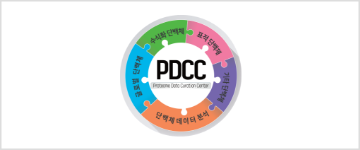2025 Fall
International Convention of PSK
2025 CONVENTION
Abstracts
Augmentation of Ca2+ signaling through pannexin-P2Y1 purinergic signaling pathway in murine ventricular myocytes under shear stress
- Kim Phuong Luong1, Trong Hieu Huynh1, Sun-Hee Woo*1
- 1College of Pharmacy, Chungnam National University, Korea
Cardiac myocytes are continuously exposed to shear stress during cardiac cycle. We have previously reported that shear stress enhances Ca2+ transients in rat ventricular myocytes. Here we examined the underlying mechanism for the shear-induced enhancement in Ca2+ signaling in isolated murine ventricular myocytes using confocal Ca2+ imaging combined with fluid micro-jet system. Application of shear stress of about 16 dyn/cm2 to single rat ventricle cell enhanced Ca2+ transient magnitude by ~35% at steady state (15 s), with an early transient increase in diastolic Ca2+ level. Inhibitions of pannexin (Panx) channels and external ATP action with probenecid and apyrase, respectively, significantly inhibited the stimulatory effects by shear stress. The P2Y1 purinoceptor antagonist (MRS2179) or IP3 receptor blocker (2-APB) significantly suppressed shear-mediated prolonged enhancement in Ca2+ transients. In ventricular myocytes from P2Y1 purinoceptor knockout mice, shear stress-induced prolonged stimulatory effects on Ca2+ transients were largely reduced, with an increase of early-phase basal Ca2+ signal. Our data suggest that shear stress augments depolarization-induced Ca2+ release via P2Y1 receptor-IP3 receptor signaling pathway, activated by pannexin-mediated ATP release in autocrine mode.
Q&A
- There are no registered questions









































